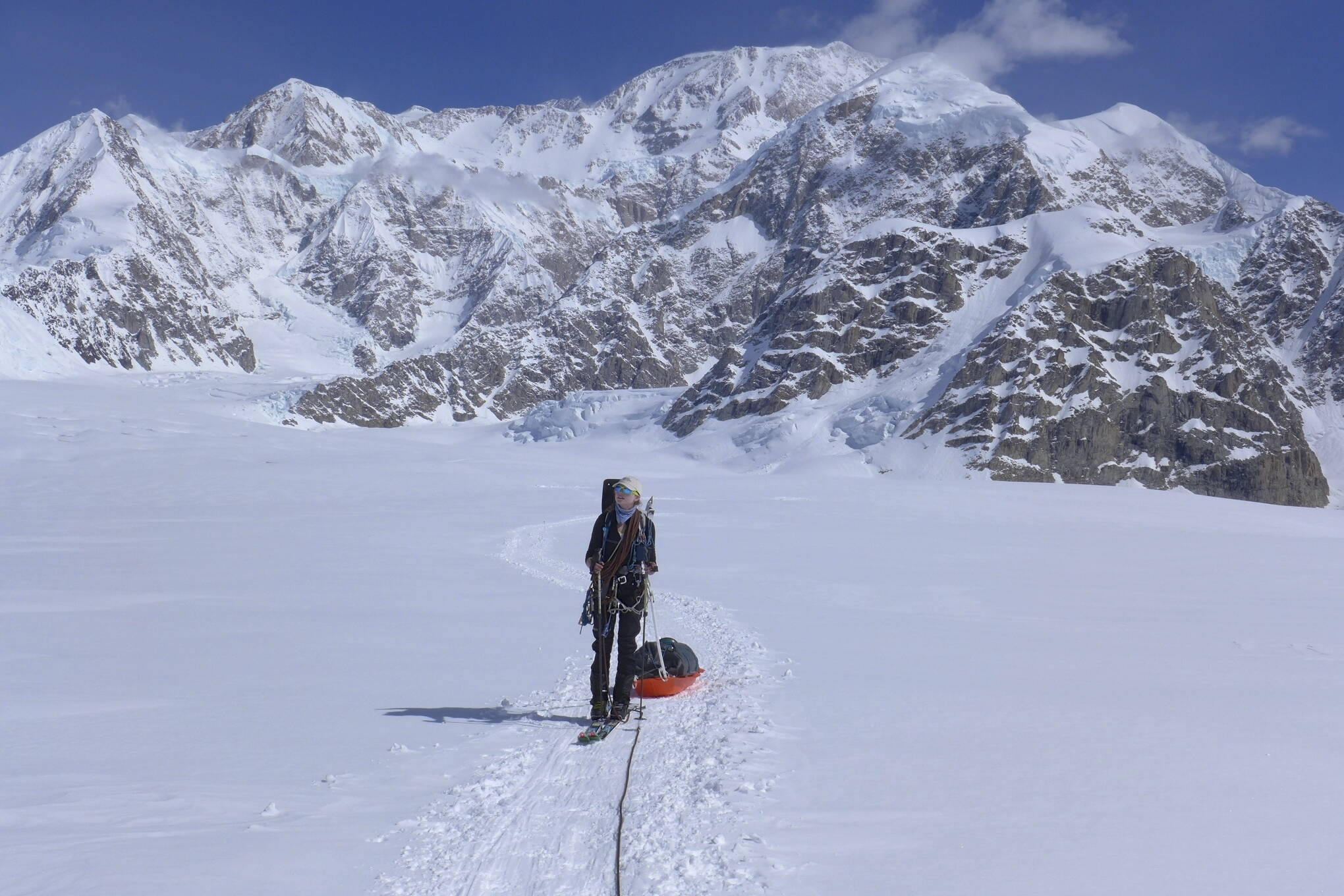Denali, North America’s highest peak at 20,310 feet above sea level, always seemed abnormally high to Peter Haeussler. He is a geologist who has studied the mountain for years and has also climbed it a couple of times.
Denali soars at least 9,000 feet above surrounding peaks in the Alaska Range, except for neighbor Mount Foraker
“It’s ridiculous how much bigger it is,” he said.
He recently came up with a theory as to why Denali is so tall.
Haeussler — pretty tall himself at 6-foot-6 — has slept on and analyzed mountain ranges all over Alaska during the past 30 years as a professional with the U.S. Geological Survey in Anchorage. During the 2023 Fall Meeting of the American Geophysical Union in San Francisco last December, Haeussler explained why he believes Denali stands head and shoulders above neighboring peaks.
The answer was a long time coming for Haeussler, with epiphanies arriving at random times, including when he sat at his desk in Anchorage and while mapping the faults in Ruth Gorge roped up on the mountain.
Over the years, he also learned that the collision of a slab of Earth’s crust into the southeast corner of Alaska shoves parts of the Alaska Range ever higher, and a sharp bend in a nearby fault system is critical to help Denali grow. But there must have been another factor to explain why Denali and Foraker are such monoliths.
One important journey for him in formulating an answer was the few weeks he spent near Denali with his daughter Kara and colleague/friend Richard Lease 10 summers ago.
While in a region near Denali called the Kahiltna Peaks in late May 2014, Haeussler and Kara collected rock samples. He would later analyze those granite chunks for beryllium 10, an isotope that can tell geologists about mountain building because it allows them to detect how long a rock has been exposed to sunlight.
While approaching a mountain wall to gather one of those rocks, the snow upon which Haeussler was walking gave way. He fell into a crevasse, a massive crack in glacier ice sometimes hidden by snow.
Luckily, he was attached by climbing rope to Kara, who was then 22 years old, and Lease. They both immediately dropped to the snow, digging in with their ice axes to arrest his fall.
While dangling at the end of the rope in the sudden darkness, Haeussler found that he could swing sideways onto a ramp of ice. He then climbed upward, surprising Kara as his ice axe punched through the snow. He then crawled out of the bottomless slot.
After he emerged, Haeussler ate a snack and then used his ice axe to chop out a rock sample for his studies.
The crevasse fall was not the only drama he remembers from the trip, which also featured a snow-and windstorm that confined him and Kara to their tent for five straight days.
Years later, with all those rock samples analyzed and evidence trickling in from other studies, Haeussler came up with this explanation for why Denali is so tall: granite at the higher elevations is just not eroding as fast as it does down low.
Why not?
Denali grew (and is growing) so high that its rock is “beyond the reach of erosion,” Haeussler said.
He explained that the air temperature almost never gets above the freezing mark above 14,500 feet or so in the Alaska Range. That prevents rocks from crumbling due to the repeated expansion of liquid water into ice.
“That shuts down the freeze-thaw that other mountains experience,” he said. “(Denali) has shut off the weathering.”
• Since the late 1970s, the University of Alaska Fairbanks’ Geophysical Institute has provided this column free in cooperation with the UAF research community. Ned Rozell ned.rozell@alaska.edu is a science writer for the Geophysical Institute.

